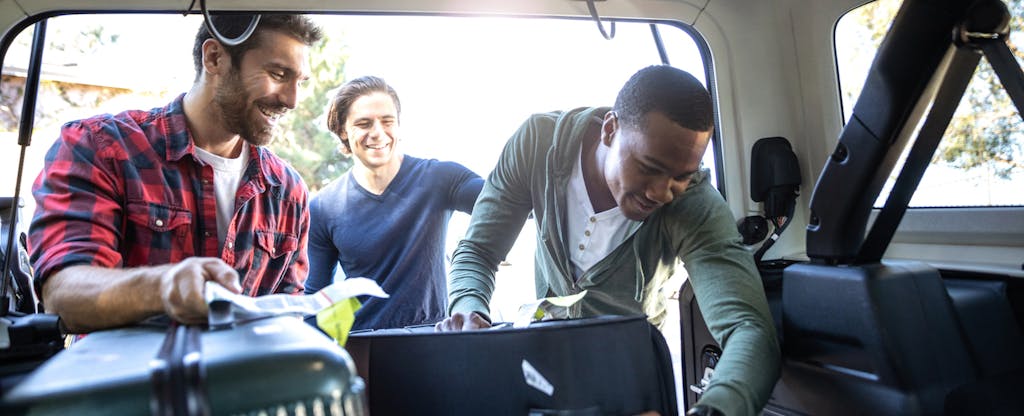In a Nutshell
Uninsured motorist coverage is a type of auto liability coverage. It could help pay for your expenses if you’re in an accident caused by someone without auto insurance, or if you’re injured by a hit-and-run driver. This kind of insurance coverage is optional in some states and required in others.What happens if you’re in an accident caused by someone without auto insurance? Uninsured motorist coverage can effectively replace the liability insurance the other driver failed to buy.
Legally, you can’t drive anywhere in the U.S. without showing proof of financial responsibility for damages or liability in the event of an accident. But that doesn’t mean everyone on the road has car insurance. In fact, about one in eight drivers are uninsured, according to a 2017 study by the Insurance Research Council.
So what happens if you’re in an accident and the at-fault driver is uninsured? Uninsured motorist coverage could help pay your medical and car-repair bills if you’re hit by a driver who doesn’t have liability insurance, or if you’re injured in a hit-and-run accident. Let’s talk about whether your state requires this type of coverage, what it covers and how it’s different from other types of car insurance.
- What does an uninsured motorist policy cover?
- What states require uninsured motorist coverage?
- Do I need uninsured motorist coverage if I have collision coverage?
What does an uninsured motorist policy cover?
There are two types of uninsured motorist insurance: uninsured and underinsured coverage. Your uninsured motorist policy might include both types, or you might need to purchase each type of coverage separately.
Uninsured motorist bodily injury coverage
Uninsured motorist bodily injury coverage helps pay for your medical bills if you’re injured in a crash caused by a driver without liability insurance. Depending on the policy and where you live, this insurance might also protect your passengers or a family member who’s driving your car.
Uninsured motorist property damage coverage
Uninsured motorist property damage coverage helps cover the cost of repairing your vehicle if it’s in a crash caused by an uninsured driver. Keep in mind that this type of coverage isn’t available in all states.
Underinsured motorist coverage
In addition to uninsured motorist coverage, some states may require underinsured motorist coverage. This type of coverage generally works the same way as uninsured motorist bodily injury coverage, but it applies to situations in which the driver who caused the accident has insufficient insurance coverage.
The definition of “underinsured” varies from state to state. In general, an underinsured driver is someone who has auto liability insurance, but their coverage lacks in at least one of two ways.
- Their limits aren’t high enough to cover your expenses after the collision
- Their limits are less than or equal to your underinsured motorist coverage limit
Underinsured motorist coverage will pay the difference between the underinsured driver’s liability limits and the cost of your damages or injuries, up to your underinsured motorist policy limit.
Some states bundle uninsured and underinsured motorist policies together as one type of coverage on your car insurance policy.
What states require uninsured motorist coverage?
Uninsured or underinsured motorist coverage is required by 20 states and the District of Columbia. In other states, it may be offered as optional coverage you can add to your auto insurance policy.
States requiring both uninsured and underinsured coverage include Connecticut, Illinois, Kentucky, Maine, Maryland, Minnesota, Nebraska, New Jersey, New York, North Carolina, North Dakota, Oregon, South Dakota, Vermont, Virginia and West Virginia.
Be sure to check with your state transportation agency to see if uninsured motorist coverage is required along with how much coverage you’re required to have — or if it’s available as a coverage option.
How to find good, cheap car insuranceDo I need uninsured motorist coverage if I have collision coverage?
If uninsured motorist coverage is required where you live, you’ll need to get it even if you have collision coverage. But if it’s optional in your state, you may not need uninsured motorist property damage coverage if you have collision insurance.
That’s because collision insurance helps you cover the cost to repair or replace your car if it’s damaged during a collision with another vehicle — no matter who’s at fault. It may also help cover single-car accidents, like rollovers, and collisions with objects — for example, if you hit a fence or skid into a guardrail.
But collision insurance doesn’t cover bodily injury, so you may still want to get uninsured bodily injury coverage. If you’re hurt in an accident caused by an uninsured or underinsured driver and don’t have uninsured or underinsured motorist coverage, you could end up paying your medical expenses out of pocket.
What’s next?
Depending on where you live, you may be required to carry uninsured motorist coverage. But even if this coverage is optional for you, it could be a worthwhile investment to protect your finances.
Consider this: How much could you afford to pay out of pocket if you were injured or your car were damaged by an uninsured driver, and how does that cost compare to the price of uninsured motorist coverage where you live? The answer could help you determine whether this coverage is right for you.
Whether you’re buying auto insurance for the first time or shopping for a new policy, be sure to gather and compare car insurance quotes from several insurance companies to help find the best policy for your needs.


